
San Antonio’s Historic Market Square vendors plan for the future
As kids, they observed their grandparents selling produce at Haymarket Plaza, stalls in Historic Market Square.
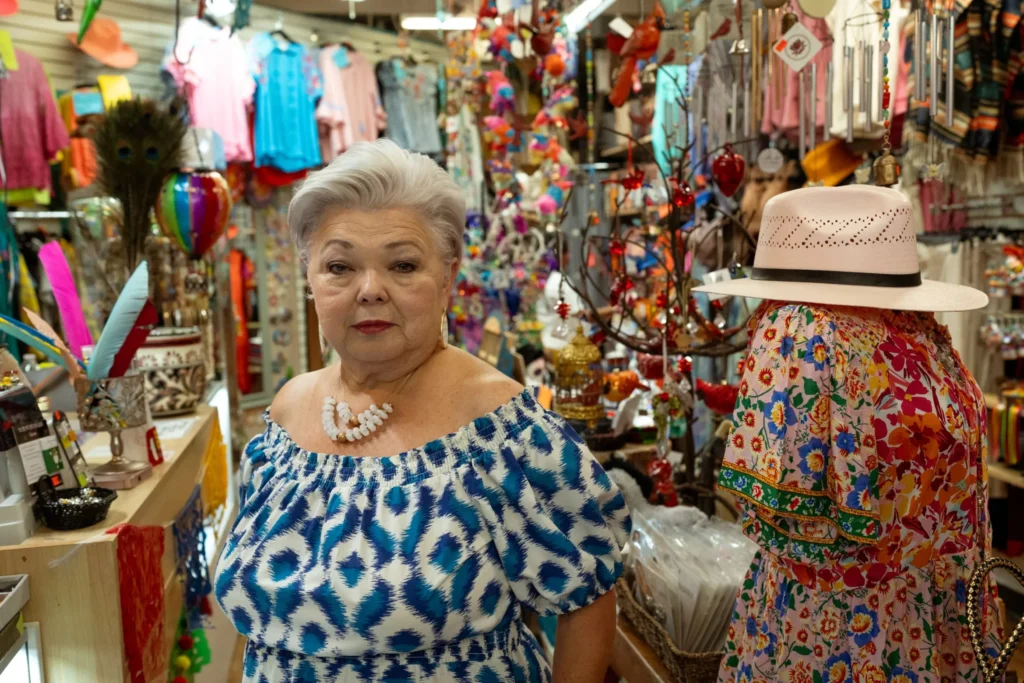
When they were kids, they saw their grandparents selling fruits and veggies from stalls at Haymarket Plaza, an open-air market in Historic Market Square.
They saw their parents follow in their footsteps, and eventually, they did the same.
Today, at least six families from the original group that had stalls at San Antonio’s beloved market before its 1976 renovation still run their businesses there, carrying on the tradition for generations.
However, these vendors, many of whom are the children and grandchildren of the original shop owners, have concerns about whether the next generation will continue these businesses that their predecessors worked so tirelessly to establish. They fear that without them, a vital part of San Antonio’s culture may be at risk of fading away.
“We have aging business owners, and they’re aging out of the business. We’re looking to make sure this Market Square doesn’t disappear,” said Yvette Ramirez, a third-generation vendor and president of the Farmer’s Market Tenant Association. “The only way we can [keep it going] is to find someone that has the same dream my parents had, just to make ends meet.”
According to San Antonio’s Center City Development & Operations Department, which manages Historic Market Square, there are 53 small business vendors in the city-owned Farmer’s Market Plaza building, and another 32 in El Mercado. Additionally, on the outdoor plaza, there are 24 working artisans and 13 food vendors occupying puestos.
Michael Douglas, who owns Martin’s Curios in the Farmer’s Market Plaza building, continues to run the same puesto that his father operated. He’s doing it on his own because his siblings weren’t keen on taking over, as he explained. Although he doesn’t have children at the moment, he holds hope that someday, if he does, they might share his interest in becoming vendors at Market Square.
“We’ve been here for 50-plus years, so I’d hope it’d keep going,” Douglas said. “We’re just kind of in a little hiccup with all this construction going on.”
Douglas and other business owners have noted that the $6.6 million Zona Cultural Project, aimed at renovating the market sidewalks, has had an impact on their businesses recently. However, they are hopeful as the construction is expected to be finished by the end of 2025.
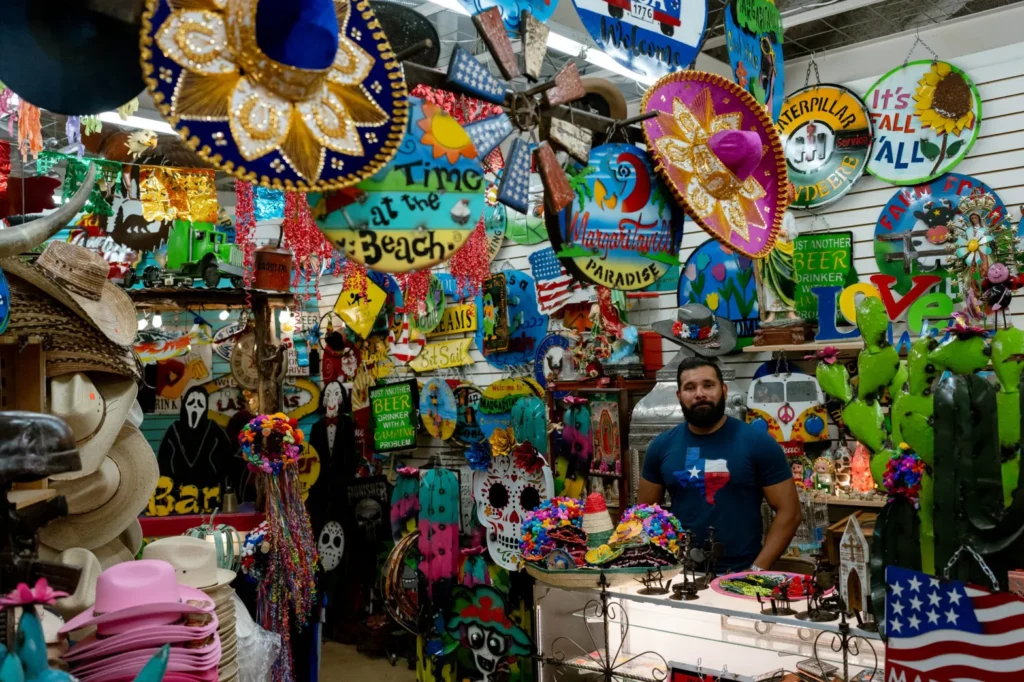
Just like his fellow vendors, Douglas is banking on the hope of increased foot traffic from both locals and tourists due to the expansion of UTSA’s downtown campus and the redevelopment of San Pedro Creek.
Yet, as they contemplate the market’s future from the very puestos they’ve maintained for nearly half a century, the original vendors are fully aware that the responsibility of preserving this legacy will ultimately fall into the hands of the next generation.
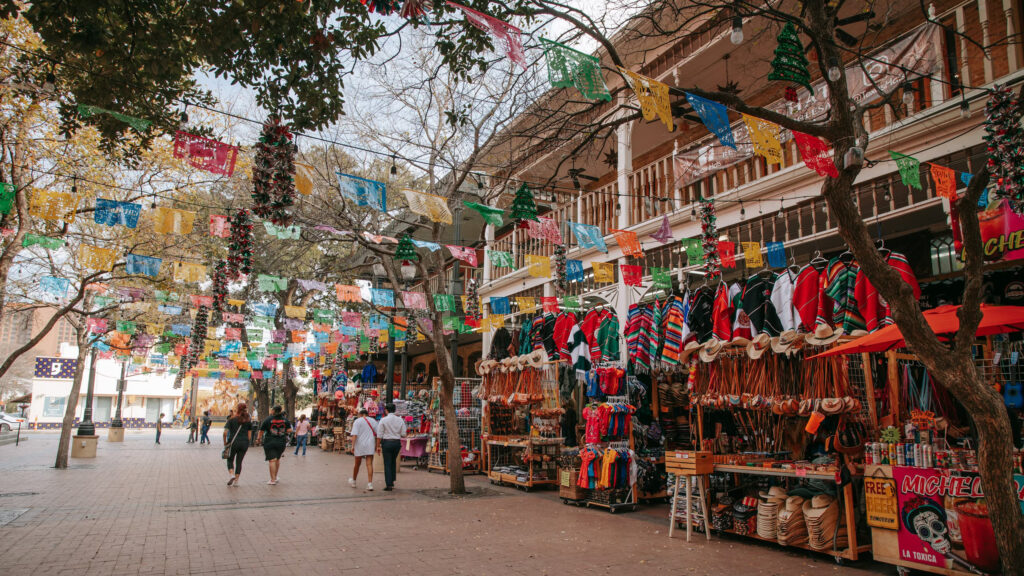
A rich and colorful history.
Historic Market Square has been a central part of San Antonio since the 1890s, and it’s one of the largest Mexican markets in the United States, according to Kelly Saunders, spokesperson for the Center City Development department. Located 859 miles north of Mexico City and 156 miles from the Mexican border town of Laredo, this colorful and lively market is a hub for celebrating various holidays and events, including Cinco de Mayo, Día de los Muertos, and Fiesta.
“There’s nothing like this. We’re one of the largest Mexican markets in the United States,” Saunders said. “We’re home to businesses that have been carried on by generations. You have la familia Cortez, and then you have tenants inside the Farmers Market and El Mercado building that have grown up within Market Square all their lives.”
In the book “Images of America: San Antonio’s Historic Market Square,” Edna Campos Gravenhorst recounts that farmers and produce vendors who rose early used to enjoy hearty cups of coffee at Mi Tierra restaurant, which first opened its doors in 1941.
In addition to the original vendors, the Cortez family, proprietors of Mi Tierra, has played a crucial role in maintaining the authenticity of Market Square.
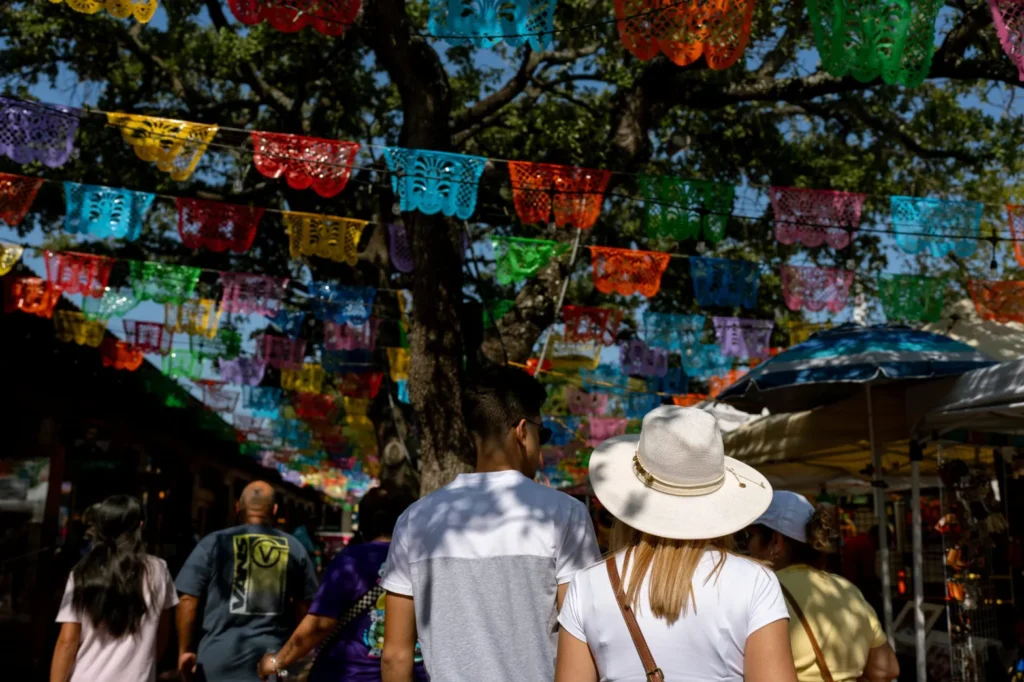
“Market Square has a historical significance to the city and to the community members here,” said Amanda Reyna, general manager of Historic Market Square. Her grandfather played the accordion there decades ago.
Between August 2022 and July 2023, Historic Market Square welcomed over 1.8 million visitors, with March and April alone seeing more than 600,000 people during Fiesta events, as reported by Visit San Antonio. While the overall economic impact of Market Square isn’t tracked by the city, San Antonio’s hospitality industry generated $19 billion in 2022.
The original businesses, now managed by second and third generations of the same families, have maintained their competitive edge and coveted puestos because they share the same entrepreneurial dreams as their parents and grandparents. The fees for obtaining a puesto at the market have not changed significantly over the years, although specific figures were not provided by the vendors.
Vendors can acquire a puesto either through a city-issued request for proposal (RFP) or a lease reassignment. According to Saunders, the last time the city issued an RFP for a Market Square puesto was several years ago, and there are no immediate plans to issue a new one. Ultimately, City Council approval is required for each lease.
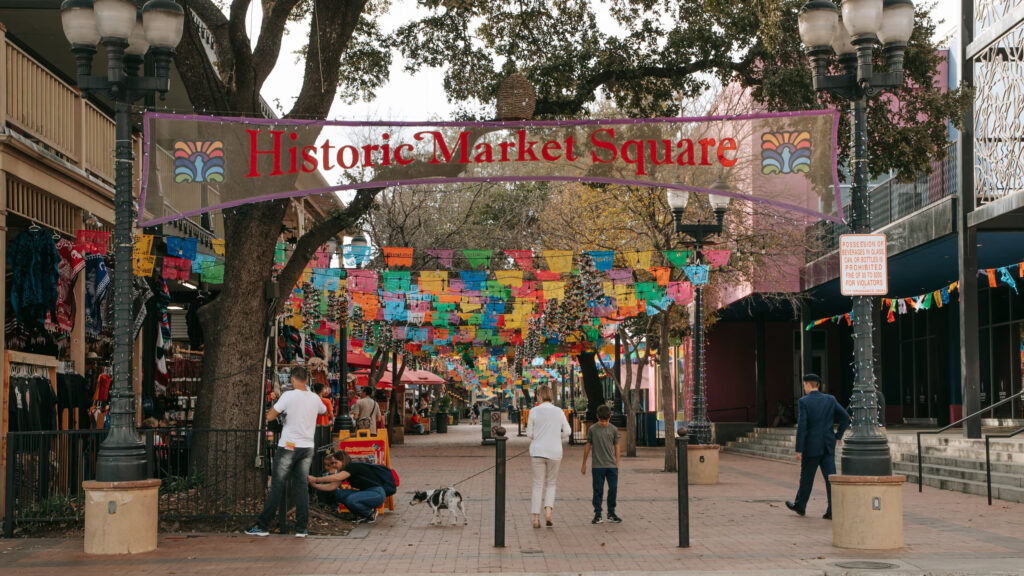
Adapting to the modern Era
In the 1950s, Douglas’s grandfather operated a stall at an open-air farmer’s market in San Antonio, selling strawberries and watermelons he grew in Poteet. By the 1970s, Douglas’s father, Martin Douglas, ran Martin’s Produce in the Farmer’s Market Plaza after the Haymarket Plaza transitioned into an enclosed and air-conditioned building.
Today, Douglas’s son continues the family tradition by selling metal yard art and signs from his puesto, with everything priced at no more than $100, he mentioned.
The transition from produce to art was a necessary one, original vendors said.
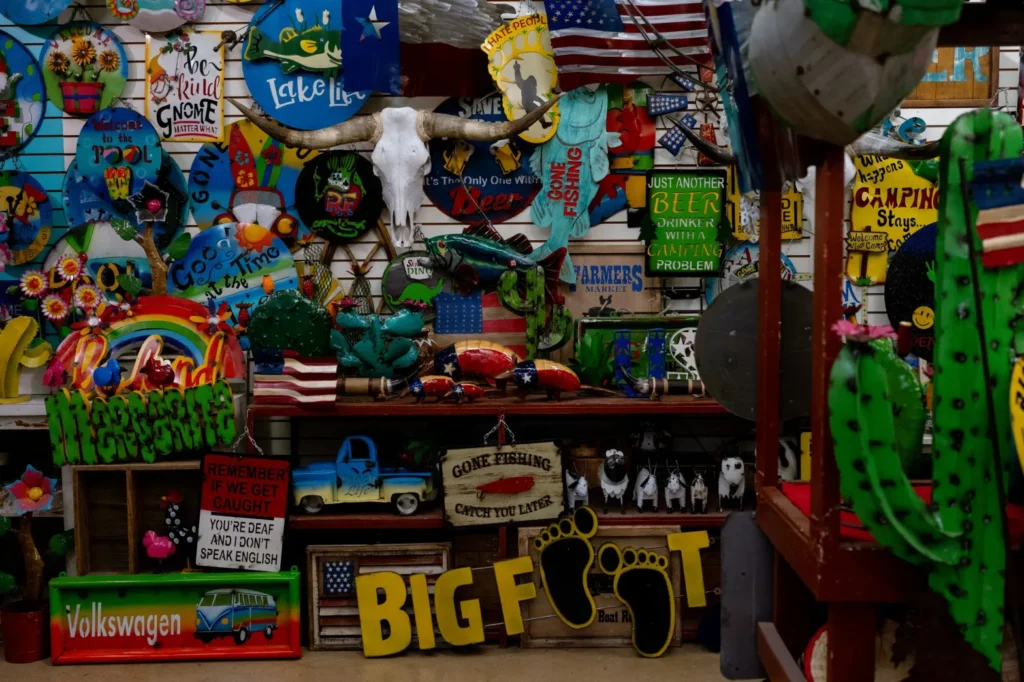
As chain grocery stores started drawing customers away from buying produce at Market Square, the vendors recognized the need to evolve. They gradually introduced handmade goods, sourced uniquely from Mexico, to their offerings. Over time, these additions included items such as hats, belts, and handmade cookware.
Jaime Herrejon, now 67 and co-owner of Little Mexico Imports, recalled his father’s days selling produce at Haymarket Plaza from 1962 to 1966. During this period, the family diversified their offerings by incorporating Mexican arts and crafts like bean pots and drinking vessels into their inventory.
“Just about everything here is handmade. If they use a sewing machine, it’s an old sewing machine,” Herrejon said.
As a child, Jaime Herrejon accompanied his mother on trips to Mexico, where they would directly purchase handmade items from Mexican artisans to later sell in San Antonio. Today, vendors from Mexico make monthly visits to Market Square to offer their products to interested local vendors.
Reflecting on his journey, Herrejon stood behind the counter of Little Mexico Imports in the same 998-square-foot puesto that his family has operated since 1976. He reminisced about starting work in the business at the tender age of 8.
As an adult, he made the decision to follow in his family’s footsteps, opting out of a college scholarship to take charge of the family’s puesto. Herrejon expressed no regrets about his choice, as it not only provided for his family but also exceeded his expectations, which is all he ever asked for.
“I definitely wanted to [carry on the business],” Jaime Herrejon said, adding that two grandkids, ages 17 and 23, are interested in the family business. “I’m 67 years old. I’m thinking about retiring maybe in five years. I’m not going to be one that stays here until they pass on.”
Carlos Herrejon, Jaime’s brother, operates another puesto just a short distance away called Old Mexico Imports. This stall offers similar items to those available at Little Mexico Imports. Additionally, various other products sold at these stalls originate from Mexico, Ecuador, Peru, and Guatemala, much like their father did decades ago.
“It’s so important that history continues on within our children, even if they don’t take over the business,” said Ramirez, whose grandfather sold produce from the Haymarket Plaza to rural South Texas towns.
Deanna and Louis Ramirez, Jaime Herrejon’s parents, used to sell handcrafted wooden roses from various puestos at Market Square. However, in 1986, they took the step of opening the Market General Store, which continues to operate to this day.
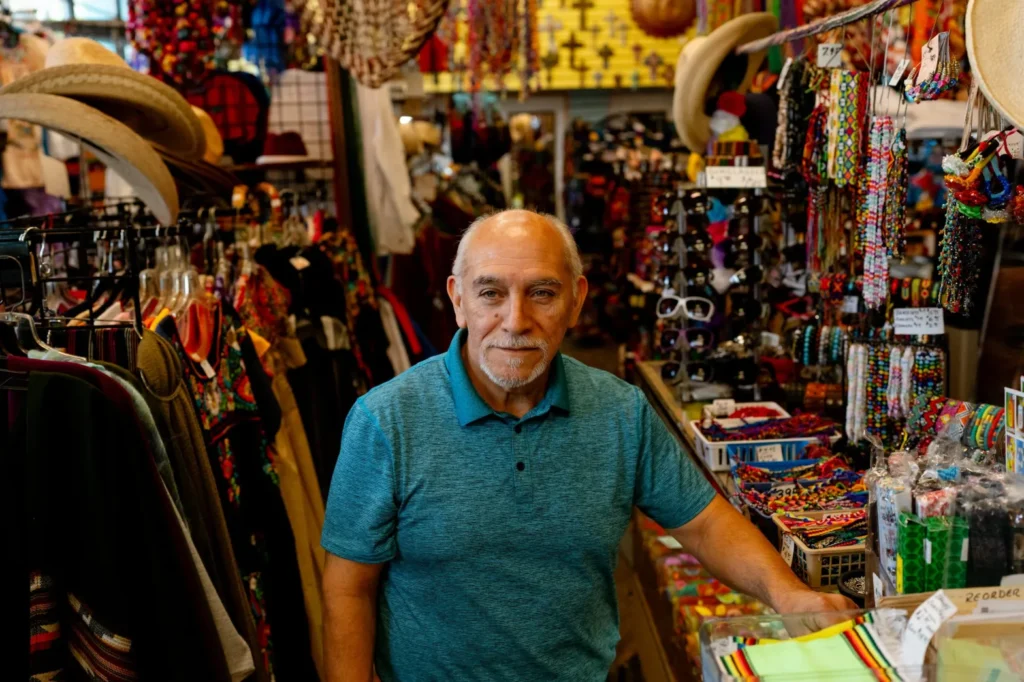
At 63 years old, Ramirez now owns Tejano Lou’s and Paloma Boutique, both located inside the Farmer’s Market Plaza building. She reached out to her 25-year-old daughter to assist in running the family business, but her daughter wasn’t interested in taking it up.
“I’ve been more open to allowing my daughter to search her path. More than likely it’s in business as well, and that’s OK with me. Even though as parents, you want them to run your business and take over, but …,” she said, trailing off.
In the event that her daughter doesn’t step in, Ramirez is considering the possibility of finding a trusted family member who will be willing to take over and continue their family legacy by purchasing the businesses.
“Hispanic people never give up. Luchan for everything they have. And they’re constantly making sure their kids have a little more than what they had,” Ramirez said. “That’s just growing up in a Hispanic family.”
Never miss any important news. Subscribe to our newsletter.
Related News


British Investor Who Predicted US Slump Warns of Next Crash

I’m a Death Doula: 4 Reasons I Believe Death Isn’t the End


Tech to Reverse Climate Change & Revive Extinct Species

AI Unlocks the Brain’s Intelligence Pathways

XPENG Unveils Iron Robot with 60 Human-like Joints

Can AI Outsmart Humanity?

11 ChatGPT Prompts to Boost Your Personal Brand

Keir Starmer Hints at Possible Tax Hikes on Asset Income

Navigating the Future of AI: Insights from Eric Schmidt
